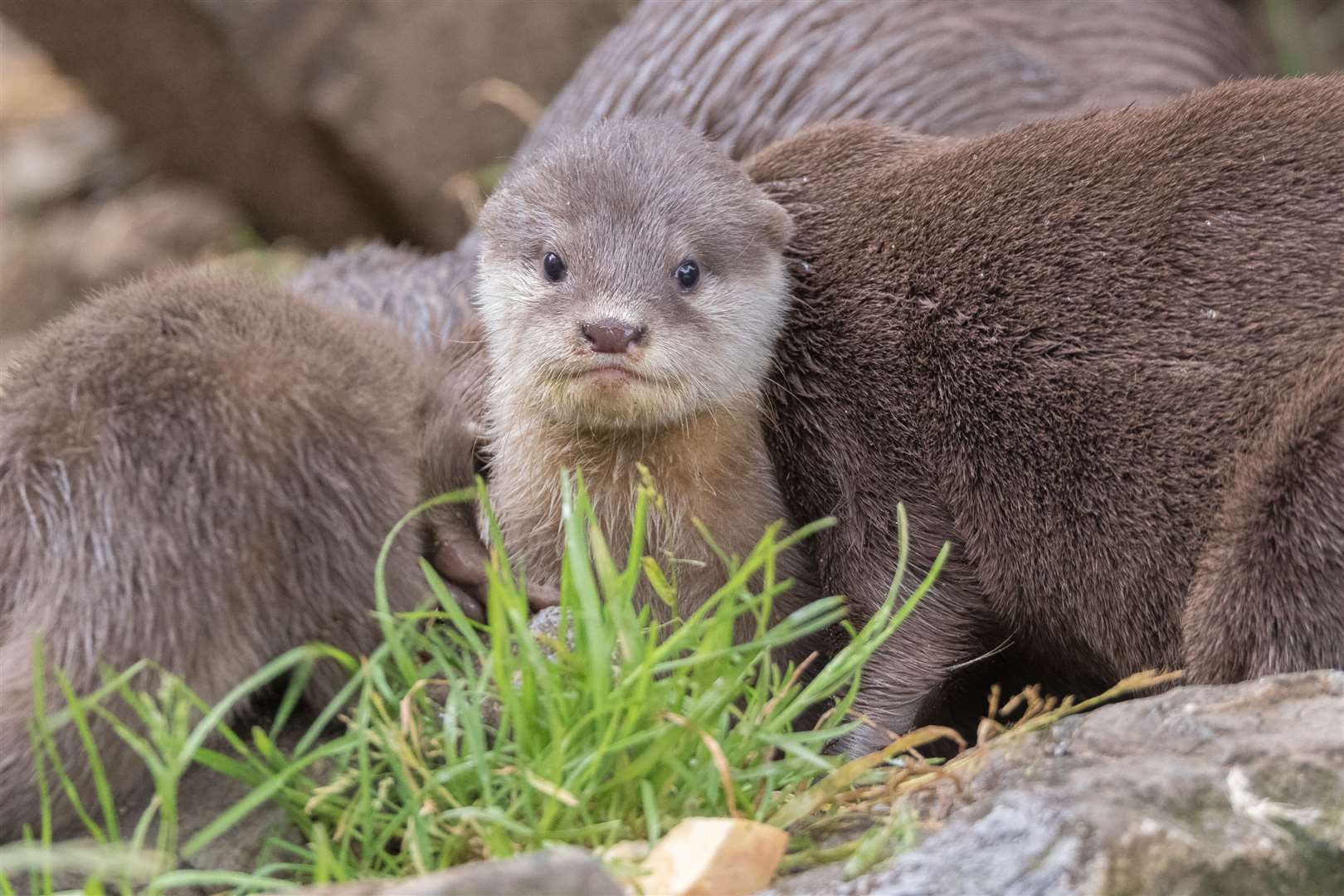VIDEO: Asian small-clawed otter cubs born at Banham Zoo
Keepers at Banham Zoo are ‘otterly' delighted with the birth of two Asian small-clawed otter cubs.
The pair have recently been spotted by visitors happily playing in their habitat with their year-old sibling, Makati, mother Tilly and father Sam, and are expected to enthral visitors this summer with their playful antics.
The two cubs were born on May 22 to second-time parents Tilly and Sam who, according to their keepers, are showing excellent parenting skills and sharing the daily care of the cubs.
Otter parents prefer to keep their cubs safely tucked away from prying eyes in their nest box for the first 8 to 10 weeks after they are born and keepers were only able to confirm the birth when the parents did not come out for food and they started to hear the cubs calling from inside the box.
The cubs are now beginning to venture out of their nest box as they explore their outside enclosure and will soon be examined by their keepers and the zoo’s vets to confirm that they are healthy as well as determine their sex.
Otters are incredibly sociable animals and over the coming weeks their parents will start to introduce swimming lessons to the range of skills they need to survive and thrive, just as they would in their native habitat.
The Asian small-clawed otter is the smallest of all otter species and is one of three species known as the ‘clawless' otters.
The otters inhabit shallow, fast flowing waters in southeast Asia and in the wild have a varied diet of crabs, snails, frogs, young birds, eggs, fish and small mammals.
The species is classed as vulnerable by the International Union for Conservation of Nature (IUCN).
Habitat destruction from farming, water pollution as well as hunting and over fishing have all led to a rapid decline in their numbers in the wild.
The IUCN estimates the global population has declined by up to 30 per cent over the last 30 years.





